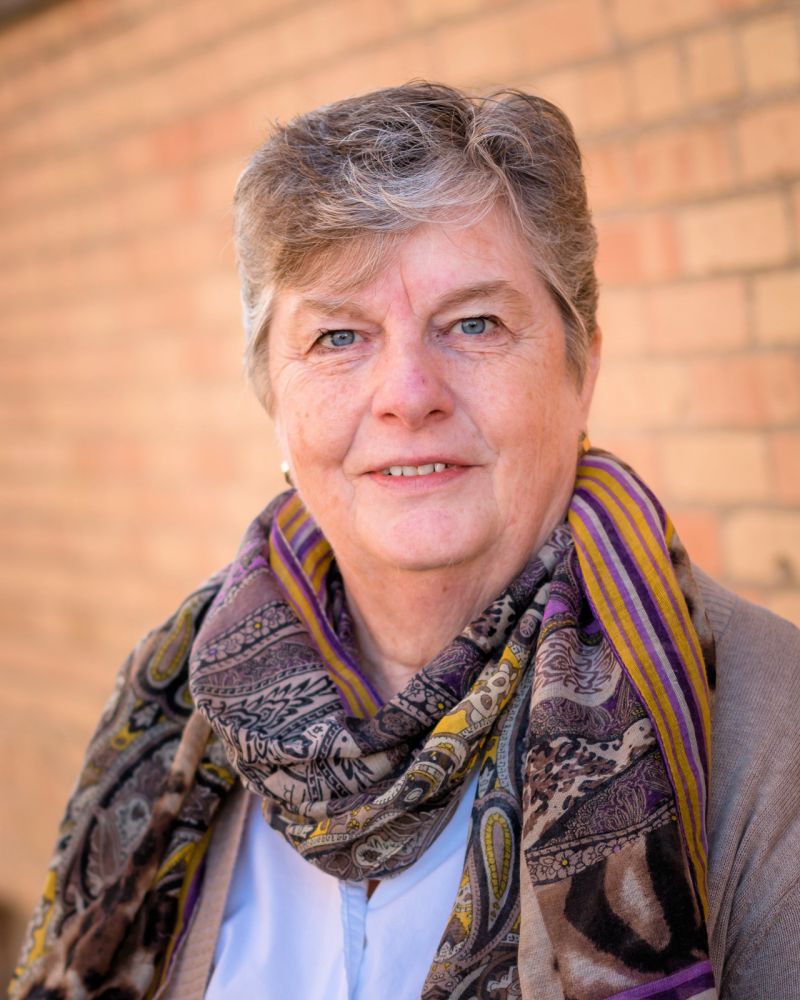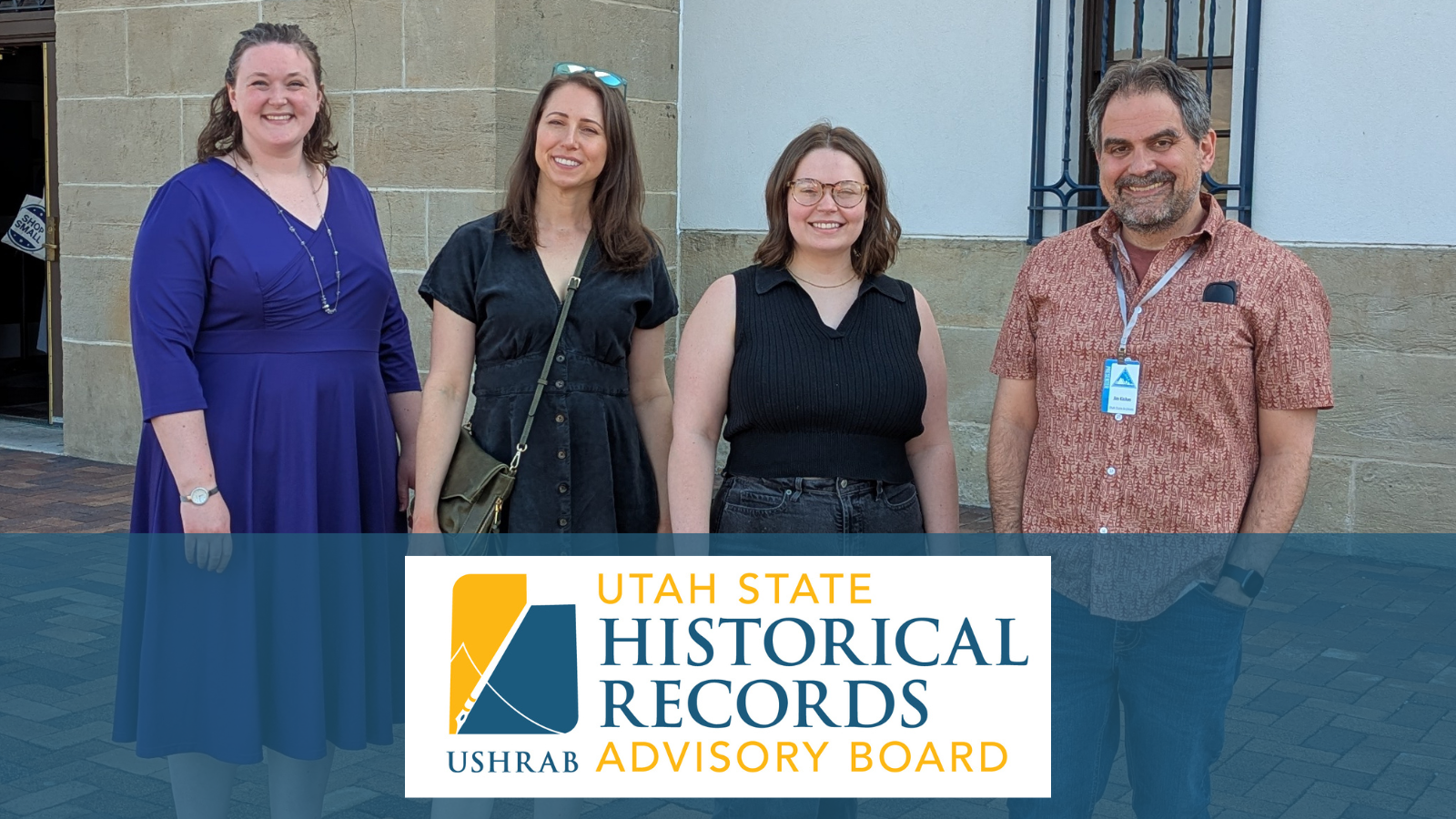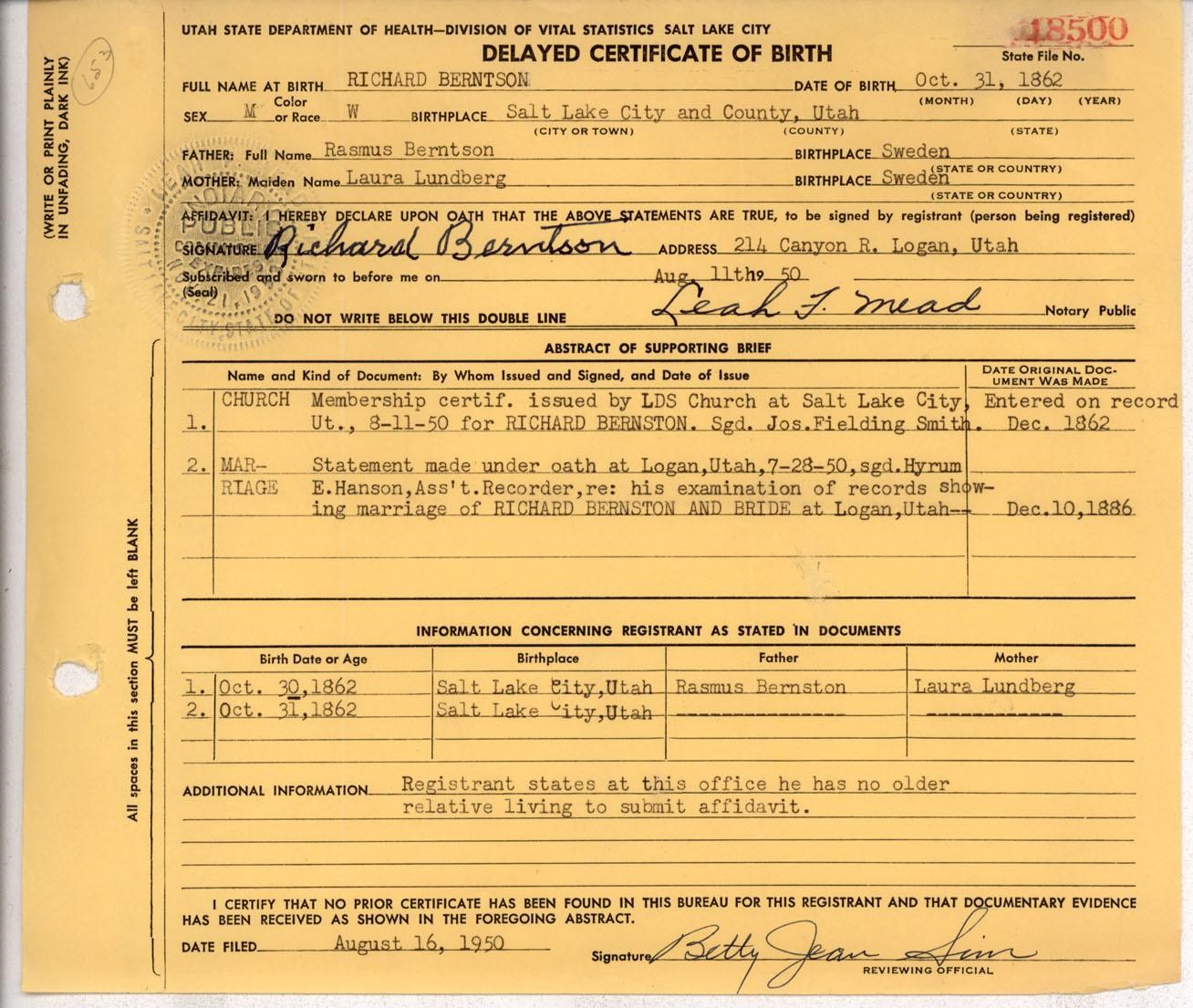
Transparency in the Archives
Here at the Archives, we have a number of people that are focused on facilitating transparency in government. We took the time to speak with a few of them to see what they do.
 Rosemary Cundiff is our Government Records Ombudsman. Her days consist of helping the public understand how they can access current government records, helping government employees respond to Government Records Access and Management Act (GRAMA) requests, and mediating between the two groups.
Rosemary Cundiff is our Government Records Ombudsman. Her days consist of helping the public understand how they can access current government records, helping government employees respond to Government Records Access and Management Act (GRAMA) requests, and mediating between the two groups.
Since she began this new role about five years ago, Rosemary has consulted with
thousands of individuals. Regular questions include how to request records, how to appeal a denial, how to respond to GRAMA requests, how to classify records, and how to interpret the GRAMA law (see her Sunshine Week post on GRAMA’s legislative updates).
Another aspect of her position is to assist the State Records Committee by mediating between the public and the governmental entities during the appeals process. Rosemary contacts every group that brings an appeal before the State Records Committee to see if they would like to meet and explore possible compromises. Of those contacts, 123 have accepted and tried to work through the mediation process; 81 have reached a successful resolution.
When asked how she supports transparency in her work, Rosemary stated that “we provide forms, the Open Records Portal, and information for people,both government employees and the public, to use” to help them access public records.
 Nova Dubovik is the Executive Secretary for the State Records Committee and works with our Open Records Portal (see her Sunshine Week post on our Portal to Sunshine). She works to train government employees on the GRAMA law and the process for responding to record requests.
Nova Dubovik is the Executive Secretary for the State Records Committee and works with our Open Records Portal (see her Sunshine Week post on our Portal to Sunshine). She works to train government employees on the GRAMA law and the process for responding to record requests.
She helps government employees understand their requirements as records officers, shares information about the Open Records Portal and how it can be used by both government employees and the general public, and helps the State Records Committee in their work to balance between an individual’s privacy and government transparency.
When asked about transparency, Nova stated that the public has the right to access government records and she works to make that process easier. “Transparency is important, it’s not just a pain…It is the history of our agencies, and how we handle the issues of government.”
Glen Fairclough, a former newspaperman, is the administrator for our Public Notice Website. He works with government agencies to help them provide access to public meeting information on the Public Notice
is the administrator for our Public Notice Website. He works with government agencies to help them provide access to public meeting information on the Public Notice
Website.
As part of his work, he monitors the law regarding who and what needs to be on the website. There are 3 subsections in the law identifying the different requirements for the different types of agencies. Glen helps all of these agencies to know what needs to be made available and how they can use the Public Notice Website.
When asked about how he supports transparency, Glen noted that the public has the right to access the government information provided at public meetings. The website provides information about upcoming and past meetings. It includes meeting agendas, topics for discussion, meeting locations and maps for directions. Government agencies can also post their meeting minutes or recordings. It is just one more way for our residents to access their government.
The Archives understands the importance of transparency and government accountability, and actively works to promote transparency and trust between government and its citizens. This week we have tried to highlight just a few ways in which we are working to create a relationship built on trust and transparency.
Recent Posts
Authors
Categories
- Certification/
- Digital Archives/
- Electronic Records/
- FAQ/
- Finding Aids/
- General Retention Schedules/
- GRAMA/
- GRAMA FAQs/
- Guidelines/
- History/
- Legislative Updates/
- News and Events/
- Open Government/
- Records Access/
- Records Management/
- Records Officer Hub/
- Records Officer Spotlights/
- Research/
- Research Guides/
- RIM FAQs/
- Roles and Responsibilities/
- State Records Committee/
- Training/
- Uncategorized/
- Utah State Historical Records Advisory Board/




